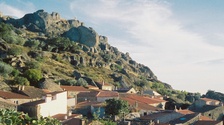Finden Sie Englisch Lehrkräfte
Dan Smith
Don't translate to Fahrenheit, think in Fahrenheit--if, heaven forbid, you need to.
96% of the world uses the Celsius scale. But some "Celsius-speakers" may have a need to understand temperatures in degrees Fahrenheit, the system used in the United States--perhaps when they are reading old books, or visiting the US. Quick tips: first, Google understands "search" terms like "100 F to C" or "20 C to F" and will give you the result immediately. (This works with currency and other conversions, too!) Second, most weather apps and websites, even US-oriented, will show both systems, or at least give you a configuration option for Celsius.
Rather than discuss how to do the annoying arithmetic, which for me is too hard to do mentally, let me give some tips on "understanding without translating." The key is to remember a few "interesting" temperature pairs.
a) 100°F = 37.8°C is close to body temperature. (100°F was supposed to be body temperature and there are different stories on why it isn't). 37°C is exactly 98.6°F--we learn that "body temperature is ninety-eight point six"--but don't bother to memorize that. The point is that 100°F is hot weather. If you see a forecast for 100°F, wear shorts and a short-sleeved shirt--and try to stay in the shade.
b) 68°F = 20°C is the official "room temperature" for setting thermostats. So this is the "ideal comfortable temperature," and anything around 65-75°F is comfortable without a jacket.
c) 32°F = 0°C is "freezing." Sometimes we even reference temperatures informally to "freezing" instead of a number of degrees. We say "It's supposed to get below freezing tonight," instead of "below 32°"
d) 0°F = -17.8°C is "zero" and it means serious winter clothing, puffy down jackets or heavy overcoats. If you aren't familiar with US weather, 0°F is starting to be dangerous--you can get frostbite if you are out for a long time and your face isn't covered or it's windy. Frostbite is no joke, it's serious.
We usually call a temperature like -5°F "five below zero" or just "five below," not "minus five."
e) -40°F = -40°C, exactly. This is where the two scales meet. Hopefully you won't actually encounter this, but it is sometimes handy to know. For example if you <em>are</em> going to convert by calculation it is easier to remember "add forty, multiply by 9/5 or 5/9, then subtract forty" then to remember whether you add or subtract 32 and whether you do it before or after.
f) For temperatures that are close to a temperature that you've memorized, just figure a degree Celsius is very roughly two degrees Fahrenheit. So if you see 60°F and you know that 68°F = 20°C, you can figure that's eight degrees lower than 68, so in Celsius it will be about 4 degrees lower than 20 = 16°C. The accurate number is 15.56°C.
So now you know: when Jack London's story, "To Build a Fire," says "Fifty degrees below zero stood for a bite of frost that hurt and that must be guarded against by the use of mittens, ear-flaps, warm moccasins, and thick socks," he is talking about something colder than -40°C, and roughly 5° colder or -45°C. (The accurate value is -45.56°).
29. Aug. 2020 12:30
Kommentare · 9
2
When we visited some friends in the Netherlands around the year 2000, they happened to show us an old graveyard in their town, and mounted on a post I was thrilled to see an old thermometer that read in °R. That is to say, the Réaumur scale. I had only seen references to it in books. And my friends had never noticed the thermometer and had never heard of Réaumur temperatures. It's simply 80% of the Celsius temperature. That is, water freezes at 0° just like Celsius, but boils at 80° instead of 100°. Wikipedia has a longish article about it, but doesn't explain why Réaumur, or anyone else, ever thought this was a good idea.
30. August 2020
2
I would add two points more: "a hand can bear" (touching hot dry subjects)-- less than 60°C (<140°F) and "boiling of water" -- ~100°C (~212°F)
29. August 2020
2
It took me many years to realize that one of the "horrors" of the dystopian world of George Orwell's <em>Nineteen Eighty Four</em> is that England has converted to the metric system. I was also slow to understand the complaint of the old guy, who wants a pub to draw him "a pint" and complains that "A 'alf litre ain't enough. It don't satisfy." Because... dare I say <em>of course...</em> U.S. Customary units were not all the same as British Imperial units. In the United States, a pint is 0.47 liter, i.e. it is <em>bigger</em> than a half liter. But the British Imperial pint the old guy wanted was 0.57 liters.
29. August 2020
2
We've been officially metric since 1956 but certain interesting glitches still persist. A person's weight is always expressed in kilos but the height continues to be stated in feet and inches. It's the most common practice even though nowadays most people do know their height in centimetres as well. At the same time, human body temperature still continues to be measured and reported even by doctors in °F but everything else is in °C.
Another short story: there are traditionally no leavened breads in India, at least not the kind that uses yeast. That kind of bread was typically associated with the colonial foreigners and it used to sell by the pound. The Hindi word <em style="color: rgb(0, 102, 204);">roti </em>generally stands for "bread" so the foreign leavened bread was called "pound roti", which got abbreviated to <em style="color: rgb(0, 102, 204);">paoroti</em>. It's still called that by the older people and interestingly enough it's still portioned out in pounds or half pounds.
29. August 2020
1
Memorizing some points on the Fahrenheit scale is the mere first step. In my opinion to think in Fahrenheit you need to think about it. To ask yourself questions in Fahrenheit.
What is the range between freezing and boiling of water points?
What is the range corresponding each 10°C?
What are those points of 10°C; 20°C; 30°C; 40°C; 50°C?
What range of air temperature in a place you live in summer (spring, winter)?
How many degrees in 1°C?
What comfortable temperature of your tea is?
And so on, and so forth...
30. August 2020
Mehr anzeigen
Dan Smith
Sprachfähigkeiten
Englisch, Portugiesisch, Spanisch
Lernsprache
Englisch, Portugiesisch, Spanisch
Artikel, die Ihnen gefallen könnten

The Power of Storytelling in Business Communication
43 positive Bewertungen · 9 Kommentare

Back-to-School English: 15 Must-Know Phrases for the Classroom
31 positive Bewertungen · 6 Kommentare

Ten Tourist towns in Portugal that nobody remembers
59 positive Bewertungen · 23 Kommentare
Weitere Artikel
